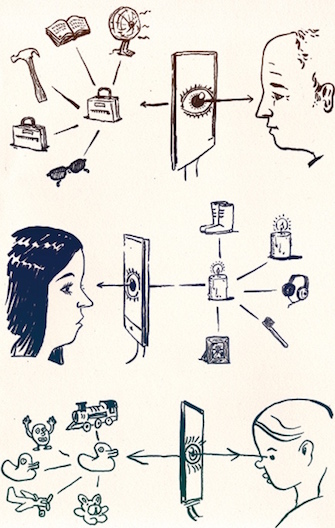ZEITGUIDE TO MIXED REALITY & HOLOGRAMS

Everyone’s been buzzing about the commercial potential of VR (virtual reality) and AR (augmented reality). But there’s a third player in immersive tech that may have greater impact. It’s called mixed reality (MR) and it portends big changes to the way we live, work and play.
While VR takes up your entire visual field with a digital Star Wars universe or zombie-ridden dystopia, AR simply superimposes images or data over reality. MR technologies combines these ideas: it places virtual 3D objects on a fixed visual spot in the real world.
MR is the closest thing to holograms we’ve seen so far — albeit viewed through a device of some kind, currently glasses or goggles. When the user moves, the object stays in place. When you move in closer, it appears larger the way a real object would.
The two leading MR projects are underway at Microsoft and a Florida-based mega-start-up called Magic Leap.
The Microsoft HoloLens headset can superimpose 3D images onto the user’s real environment. But it’s the mind-blowing potential of its holoportation project that has everyone buzzing. That lets a user interact with a live 3D hologram of another remote person. Basically, think Princess Leia’s “Help me Obi-Wan Kenobi” hologram meets Facetime.
The most promising application of this capability may come with tele-conferencing and a similar idea is at the center of the new Tom Hanks film A Hologram for the King, based on the Dave Eggers novel of the same name.
Magic Leap’s technology uses a photonics chip that renders a “digital light-field signal” according to founder Rony Abovitz. It manages to make virtual objects look like they are truly farther away, not just projected on a screen inches from your eyeballs. Venture capitalists have been so impressed by this mixed reality they’ve invested $1.4 billion so far.
Microsoft is shipping a $3,000 version of its HoloLens to developers. Magic Leap’s technology has been shown only to investors, advisors and a few reporters.
There’s also a market emerging for holographic entertainment content. HBO and Discovery, for instance, just acquired equity stakes in OTOY, a cloud graphics company that specializes in holographic image capture and rendering technology. The TV companies say they’ll distribute original holographic content across television, mobile, web and VR systems — including new content by Jon Stewart. Netflix and Hulu are already developing VR apps for their subscribers, and LiveNation just struck a deal to broadcast rock concerts in VR.
Enjoying such entertainment still requires headsets or goggles, but glasses-free innovations are on the horizon. How long before a holographic Jon Stewart strolls into your living room to deliver a monologue?
